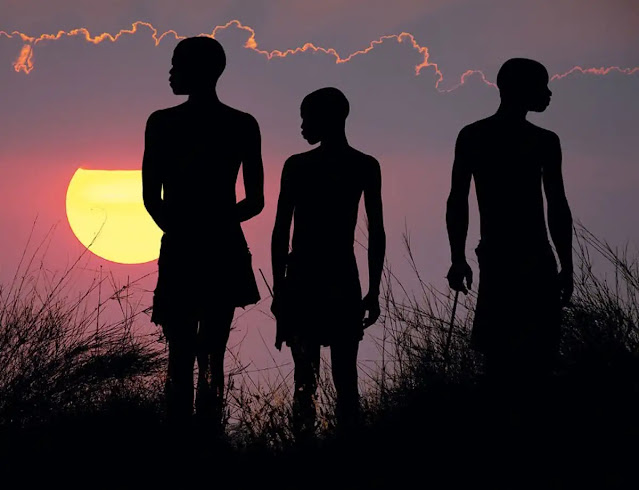What I’m coming to lately is an end-of-life conviction that there is more
to consciousness than what is produced in my little head, or yours.
Both of us have the capacity, at times, mysteriously, to get beyond
whatever this small consciousness is doing and telling us.
When we are able, when we are sufficiently still and relaxed—letting it happen,
not doing it—we can receive a resonance from a greater consciousness.
Many spiritual masters I’ve known, and also eminent scientists like Carl Jung,
echo this belief. Just before Jung died, He said: “Man cannot stand a meaningless life.
Something in us sees around corners, knows beyond time and space,
so may continue in that state after our physical death.
Those who fear death as the End, die soon.
Those who think they will go on, die old.”
Fear is constricting. In fact, so are all those self-concerns for one’s reputation,
for one’s ideas, even for what the next association is telling me. For example,
am I just thinking of what I should say to you now? Or am I open to something
that could be quite new, that is not really coming so much from me
as from this source consciousness that many traditions have called “I”?
I’m referring to the consciousness that manages to see what things are,
what I am, and to not get caught in the next reaction or judgment or association
—because all of these are functions; and consciousness is not a function.
Without being in love with consciousness, we can’t reach it,
and it can’t reach us while we’re preoccupied with all that is going on
in our ordinary thought, our ordinary bodily habits, sensations, movements,
and our ordinary emotional reactions.
These are what I am calling functions.
It’s as if we have two natures: a functional nature and what many people
have been calling a spiritual nature or a soul. But that language
is suspect these days because we have been so careful for the last couple
of centuries to separate from the superstitions of the past
that we have involuntarily cut ourselves off from the sacred,
and even from God.
This narcissistic preoccupation with my story, my difficulty,
which always has a kind of negative touch to it because I am complaining
about what is wrong with me either physically or mentally. And the quiet,
impartial, impersonal mind, consciousness, with which I
could be connected, is blocked by that.
It is so important to understand awareness as a connector to
something greater than me, to my source, really. My presence
is the doorway to that, even at the moment that I acknowledge
that I don’t know who I am and I see my lack of presence.
But that is the beginning of a real wish for it, a wish to be.
And when I have that wish, then maybe something can reach me
that is of an absolutely different quality. I may perceive it as an axis
of light running down through my physical body, which has a different
origin. Gurdjieff says the physical body comes from this earth,
and this other … my essence … comes from the stars, from the sun,
from higher up, in a sense, closer to the source.
We have such a resistance to even the theoretical idea that we could,
right now, you and I, be breathing an air charged with
the omnipresence of consciousness, the omniscience of consciousness.
We’ve all had, perhaps rarely, a direct experience of a moment when
I knew everything at once and I was aware not just of what
I’m calling this present moment, but of past, present, future,
as one eternity.
These are just words at this moment. But I remember it wasn’t just a word,
it was a flash of light, of electricity from the top of my head to my toes.
And it changed something in my cellular structure that persists today.
I feel that now. And everybody has this possibility for a change.
As you say, we have to be aware of our need, in order to be receptive
to this source consciousness, to wake up in a larger sense.
I can’t reach it, but it can reach me.
It’s not a mental conception, but a deeper conviction
that could draw everything and everyone together in the love
of consciousness, the faith of consciousness, the hope of consciousness.
~ James George
from To let the Light In, A Conversation with James George
in Parabola Magazine




































